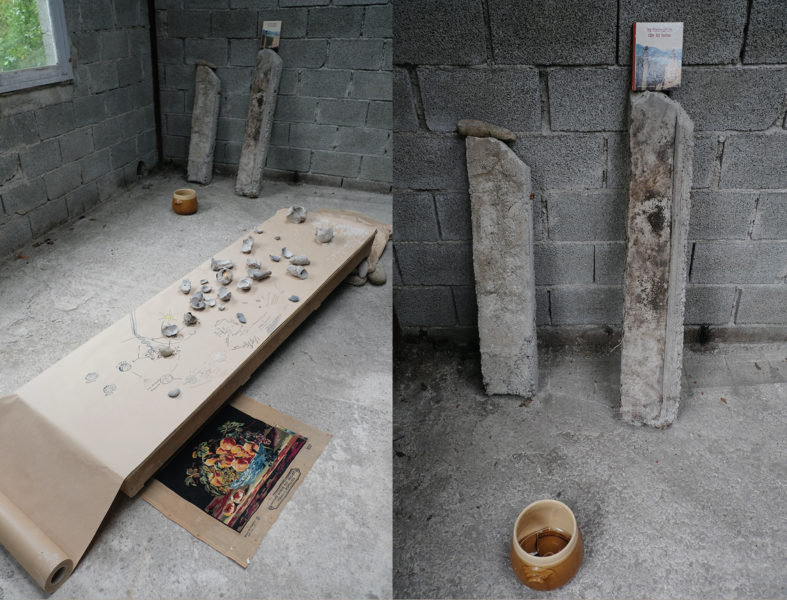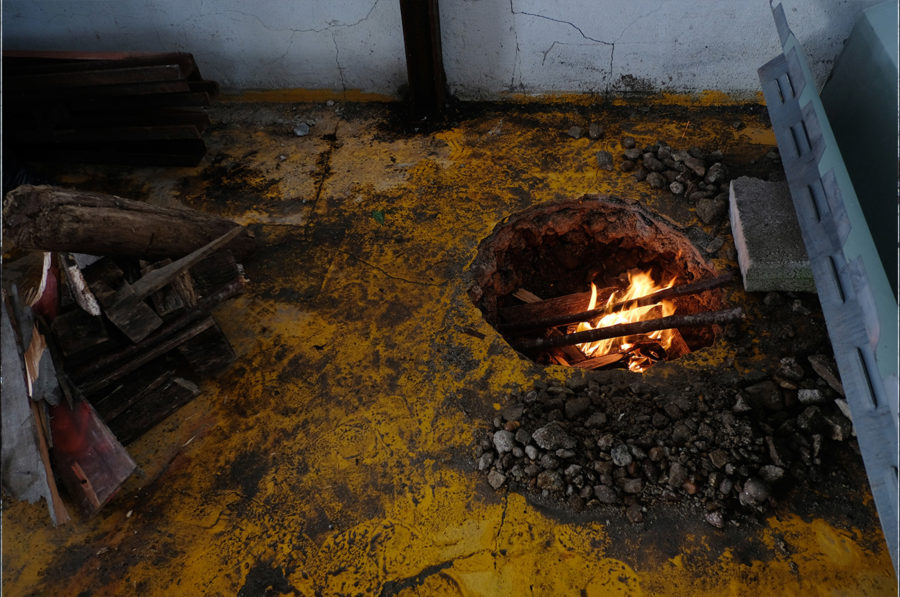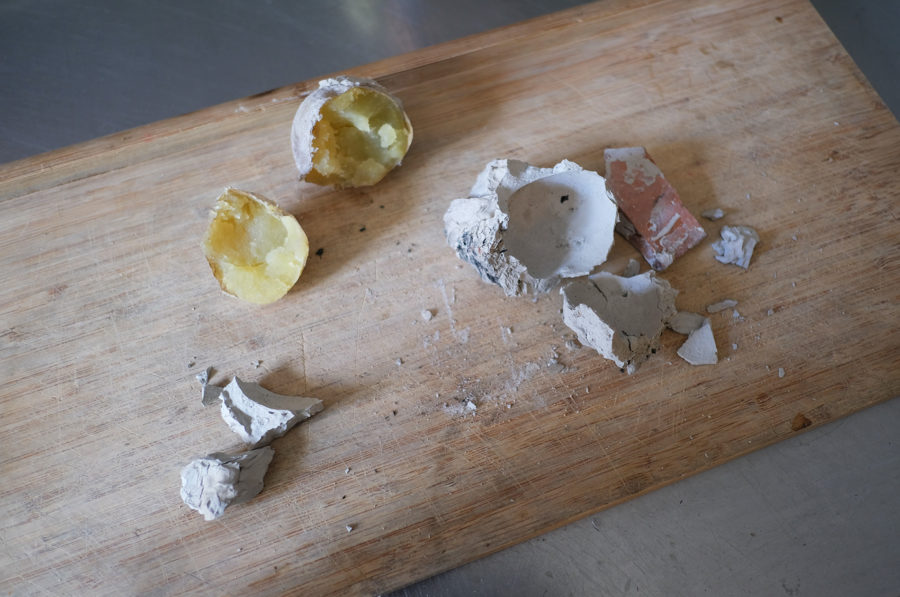La fermentation de la Terre
La fermentation de la Terre is an installation I developed together with Tessa Zettel, at Treignac Projet, in the south of France. It happened as part of Entanglements, Embodiments, Positions, curated by Jussi Koitela. It has been exhibited in COOKBOOK’19, La Panacée MOCO (Montpellier Contemporary), Curators : Andrea Petrini & Nicolas Bourriaud, 9 February – 12 May 2019
text:
When Valentina and Tessa arrived for a collaborative residency in the South of France, at independent artspace Treignac Projet, they planned to explore their shared fascination with processes of fermentation. La fermentation de la Terre is the result, an experiment in fermenting underground that was part of the exhibition Entanglements, Embodiments, Positions, curated by Jussi Koitela and continuing his work on Karen Barad’s material-discursive intra-actions.
For early Europeans, the transformation of ordinary ingredients into ferments was something magical. The Ancient Greeks believed that living things could spontaneously come into being from nonliving matter, and that the goddess Gaia was able to make life arise instantaneously from stones – a process known as Generatio spontanea. In chemistry, fermentation was initially understood as a process of death, not life, related to molecular vibrations. With Pasteur’s discovery in 1857 that lactic acid fermentation is caused by living organisms, people had to accept that their world was shared with multitudes of minute organisms exerting an ongoing powerful influence on human life. The new theory of biogenesis aroused fierce criticism from the scientific community of the day, worried it would renew the waning mystical philosophy of vitalism which they had worked so hard to defeat. La Terre, the earth, is an important element for various reasons; first of all, it has a steady body, a thermal mass, offering a stable environment for the microorganisms to live, this is why burying the kimchi vessels is a common practice in Korea. Besides, soil itself is a product of fermentation processes, as rocks and minerals on one hand, and dead organic matter on the other, are digested together to form it. In ’72, chemist James Lovelock published the Gaia Hypothesis, which proposes that living organisms interact with their inorganic surroundings on earth to form a synergistic and self-regulating, complex system that helps to maintain and perpetuate the conditions for life on the planet. So, at the end, perhaps the full story goes like this: the earth (planet) as a synergetic and self-regulating system between living organisms and inorganic surroundings, vibrates on the rhythm of overlapping cycles of life, death and rebirth through fermentation; everything that is alive becomes at some point earth itself (soil).
Over a one-week residency, Valentina and Tessa experimented with techniques for making locally-grown beetroot and carrot pickle (incorporating the beetroot stalks and leaves), a French variant of kimchi (with chilli, ginger and herbs from the garden, thyme, rosemary, dill..), and pickled eggs, all in ceramic vessels that would be buried in the earth, fermented only using only salt, water and the lacto-bacteria naturally present in the air. One of thsee vessels had been found buried under the basement of a 500-year old stone house a few kilometres away. Stones from the stream running through Treignac served as very good weights, keeping the vegetables under the salty water level. Unable to locate a suitable site for a burial pit on the property, with topsoil in this region being very thin, Sam & Liz of Treignac Projet decided that they needed to make one, so Sam set to drilling out a patch of concrete in the courtyard. Valentina and Tessa tried out some underground clay-baked slow-cooking in the new hole, and left behind a pit that can now be used for future fermentations.





